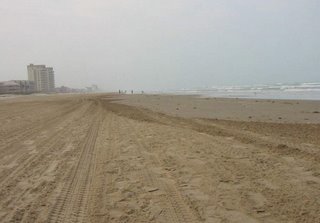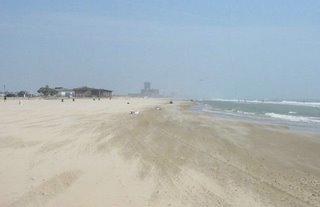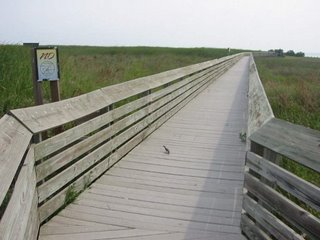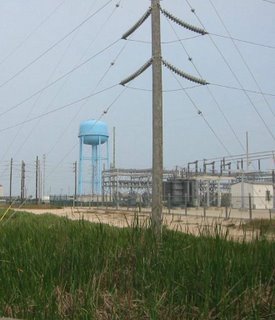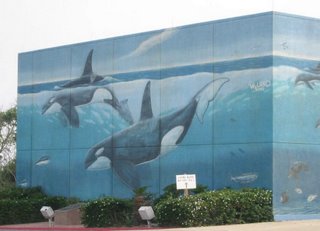
The November/December 2006 issue of the AAA magazine Texas Journey has an article called "Delicious Detours" where they list 13 restaurants in Texas that are "worth the trip." One of the restaurants on the list is King's Inn at Baffin Bay. I read the review with interest because I had been there earlier (May 2006), and, for me, I would say it was questionable whether the trip was worth it (at least on the day I was there).
To get to the restaurant, you go down U.S. 77 about 24 miles (38.6 km) south of Kingsville. You take a left at Highway 628 (cross the median, then cross 77 northbound traffic). After about 9 miles (14.5 km), 628 curves right, but keep straight and you'll enter a gravel road. This road leads to the restaurant and Baffin Bay. To say the least, the restaurant is remote.
I found the exterior and interior to be a bit drab. We sat in the large main area by ourselves. The room off the main area with the good view of the bay was filled up. However, we did have a good view of the kitchen with its stained ceiling.
A waitress approached our table and asked what we wanted. Mind you, this is a menu-less restaurant. Although I was aware of that fact, I was expecting some kind of verbal guidance. Perhaps a better first question would have been "Have you been here before?" Once we got an idea of the offerings, we had to gauge how much food we wanted. Everything comes in one pound increments, and I had no idea what a pound of, say, crab looked like. Little help from the waitress on this, as well.
We ended up ordering a pound of fish, shrimp, and crab. The waitress returned announcing they were out of crab. We changed to scallops. Unfortunately, we forgot to specify boiled, so we got fried scallops.
The meal started with a Bombay salad, which I found really good; it tasted like it had curry in it. I found all the food tasty (even the fried scallops), but nothing seemed exceptional to me. We ended up with way too much food, which went to waste because we were traveling and couldn't refrigerate it. The bill for this two-person lunch with average tip came close to 65 dollars!
I was disappointed with this first-time visit. The word "overrated" came to mind. However, I'm willing to give a place that has been a landmark for 70 years a second chance . . . if I'm in the area again.
My rating: 3/5 stars



